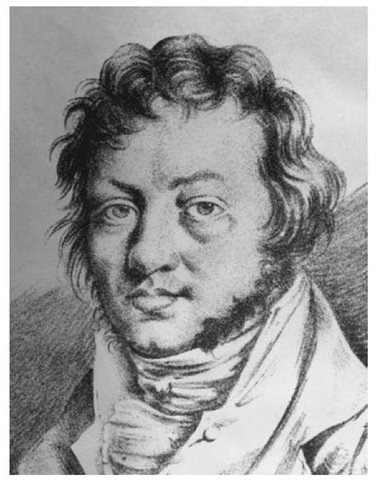A mathematical child prodigy self-educated according to the principles of Rousseau, Andre Ampere established his scientific significance after a fit of inspiration in September and October of 1820, when he developed the science of electrodynamics. Both Ampere’s Law, which established the mathematical relationship between electricity and magnetism, and the ampere, or amp, a unit for measuring electrical current, were named after him. Though Ampere maintained wide-ranging interests in mathematics, chemistry, metaphysics, philosophy, and religion, his main source of fame derived from his work with electricity and magnetism.
The "amp," the unit for measuring electrical current, is named for Andre-Marie Ampere.
Ampere was born in Lyon, France, on January 22, 1775, to Jean-Jacques Ampere, an independent merchant who provided his son with a complete library, and Jeanne Desutieres-Sarcey Ampere, a devout Catholic who instilled her faith in her son. Ampere spent the rest of his life reconciling his reason with his faith. His personal life amounted to a series of disasters, starting with the execution by guillotine of his father on November 23, 1793, in the midst of the French Revolution. Tragedy took a respite during his relationship with Julie Carron, whom he courted against all odds and married on August 7, 1799. Tragedy revisited him when she died on July 13, 1803, of an illness contracted during the birth of their son, Jean-Jacques, on August 12, 1800. Ampere then entered into an ill-advised marriage to Jeanne Potot on August 1, 1806. The only positive outcome of the wedding was the birth of his daughter, Albine.
Though Ampere did not hold a degree, he taught mathematics at the Lyceum in Lyon before his appointment as a professor of physics and chemistry at the ecole centrale in Bourg-en-Bresse in February 1802. In 1808 Napoleon appointed him inspector-general of the new university system, a post Ampere held until death. In 1820 the University of Paris hired him as an assistant professor of astronomy, and in August 1824 the College de France appointed him as the chair of the experimental physics department.
In early September 1820 Francois Arago reported to the Academie des Sciences on the discovery by Danish physicist hans christian 0orsted that a magnetic needle deflected when current in nearby wires varied, thus establishing a connection between electricity and magnetism. In less than a month, Ampere presented three papers to the Academie that established the science of electrodynamics by positing that magnetism was simply electricity in motion. Specifically, Ampere worked with two parallel wires with electrical current flowing through them: he discovered that the currents attracted each other when heading in the same direction and repelled one another when traveling in opposite directions. The implications of his experiments suggested a whole new theory of matter. Ampere published a comprehensive overview of his findings in 1827 in his Memoir on the Mathematical Theory of Electrodynamic Phenomena, Uniquely Deduced from Experience. The scientific community did not embrace his theories until Wilhelm Weber incorporated them into his theory of electromagnetism later in the century.
Ampere died on June 10, 1836, while alone on an inspection tour in Marseilles, France. Despite his tragic personal life, Ampere led a successful scientific life, contributing an entire field to the study of science.

